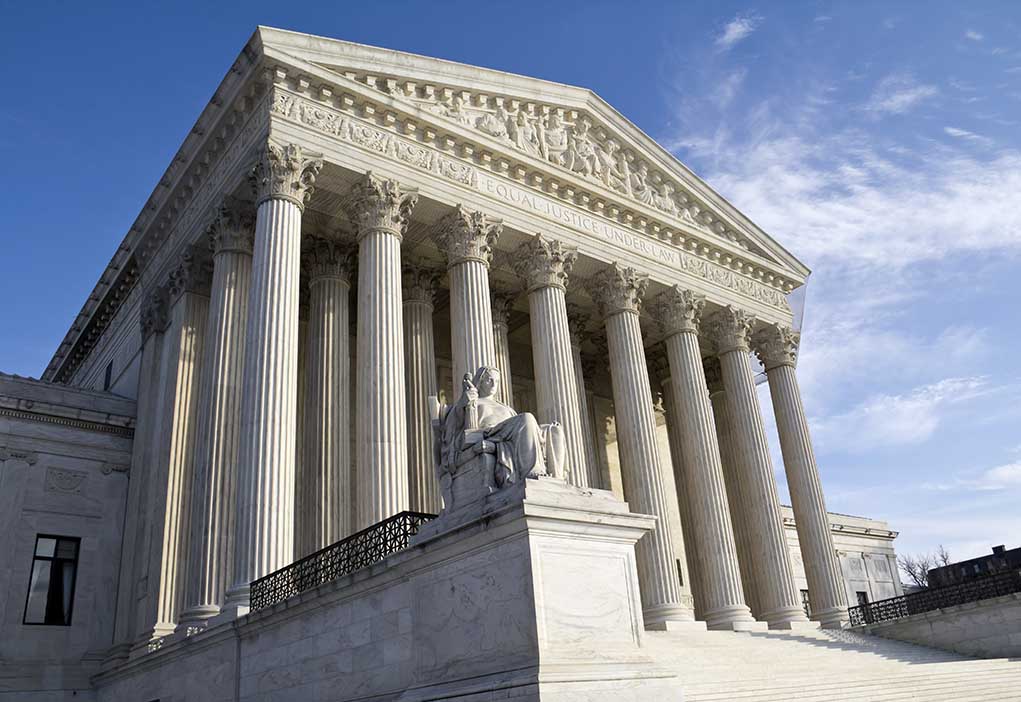
In a powerful win for American infrastructure development, the Supreme Court unanimously reined in decades of environmental regulatory overreach, clearing the path for crucial construction projects nationwide while dismantling burdensome assessment requirements.
Key Takeaways
- The Supreme Court ruled unanimously (8-0) that federal agencies only need to consider immediate environmental effects of construction projects under NEPA, not upstream or downstream impacts.
- The case centered on an 88-mile railroad project in Utah’s Uinta Basin designed to transport crude oil to refineries in Texas and Louisiana.
- This decision reverses decades of regulatory expansion that has delayed infrastructure projects by an average of 4.2 years.
- The ruling streamlines the approval process for critical infrastructure like highways, bridges, and pipelines by limiting the scope of environmental reviews.
- Infrastructure development advocates celebrate the decision while environmental groups express concern over potential oversight failures.
Supreme Court Delivers Major Victory for Infrastructure Development
In a landmark ruling that will reshape America’s infrastructure landscape, the Supreme Court has significantly narrowed the scope of the National Environmental Policy Act (NEPA). The 8-0 decision limits federal agencies’ environmental assessment responsibilities to only the immediate effects of construction projects, eliminating the need to analyze far-reaching upstream and downstream impacts. This decisive action removes a major regulatory hurdle that has historically blocked or delayed critical infrastructure projects for years, if not decades. The ruling stemmed from a case involving an 88-mile railroad project in Utah’s Uinta Basin, intended to transport crude oil to refineries in Texas and Louisiana.
The Seven Counties Infrastructure Coalition applied for the project in 2020, and the federal Surface Transportation Board (STB) conducted extensive evaluations, including public meetings and a comprehensive 3,600-page environmental impact statement (EIS). Despite this thorough review process, Eagle County, Colorado, and several environmental groups challenged the STB’s 2021 approval, arguing it violated NEPA by failing to consider downstream environmental effects from the oil’s eventual combustion. The D.C. Circuit Court initially sided with the challengers, but the Supreme Court’s decision has now definitively overturned that ruling.
Breaking Through Regulatory Gridlock
Justice Brett Kavanaugh, writing for the majority, delivered a clear rebuke to decades of regulatory expansion: “The Surface Transportation Board did not need to evaluate potential environmental impacts of the separate upstream and downstream projects.” He further clarified that “the proper judicial approach for NEPA cases is straightforward: Courts should review an agency’s EIS to check that it addresses the environmental effects of the project at hand. The EIS need not address the effects of separate projects.” This straightforward interpretation returns NEPA to its original intent rather than the expansive regulatory tool it had become.
“They did a major cutback,” said Richard Lazarus, Harvard Law Professor “Right or wrong, that’s not been the NEPA law for 50 years.”
The ruling represents a significant shift in how environmental reviews will be conducted going forward. NEPA, which requires federal agencies to assess the environmental impact of proposed projects before construction, has long been weaponized by environmental activists to block development. Statistics show that NEPA-related litigation has extended project start times by an average of 4.2 years, creating massive cost overruns and sometimes killing projects entirely. Even progressive priorities like renewable energy projects have been casualties of these excessive regulatory burdens.
Economic Impact and Future Implications
This decision arrives at a critical time when America’s infrastructure desperately needs revitalization. By limiting the scope of environmental reviews and instructing courts to “afford substantial deference” to federal agencies’ assessments, the ruling significantly reduces the regulatory barriers that have stalled countless infrastructure projects. Industry experts anticipate this will lead to faster approvals for highways, bridges, pipelines, and other critical infrastructure components, potentially saving billions in costs and accelerating economic growth across multiple sectors.
“This ruling will promote more efficient and effective NEPA review for countless projects across the country,” said lawyer Hadassah Reimer, highlighting the widespread economic benefits expected from this decision.
The decision represents a clear victory for President Trump’s agenda of cutting regulatory red tape and accelerating American infrastructure development. By returning NEPA to its original purpose rather than allowing it to function as an all-purpose environmental blocking tool, the Supreme Court has taken a significant step toward rebuilding America’s competitive edge. While environmental groups have expressed dismay at the ruling, supporters of infrastructure development celebrate it as a common-sense approach that balances environmental stewardship with economic necessity and removes unnecessary bureaucratic obstacles that have hampered America’s growth for decades.











